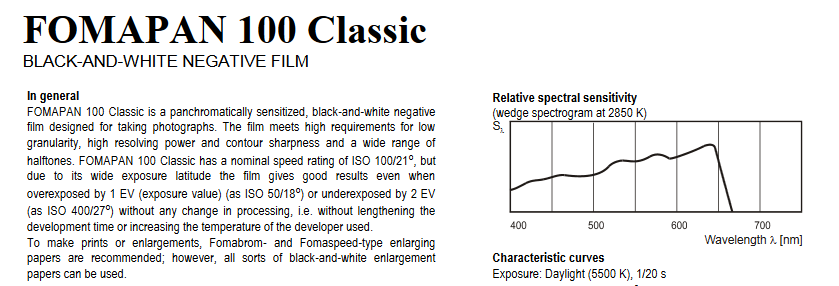There are two main things you need to know to mimic a film in Capture One are: 1, the spectral sensitivity of the emulsion of the film and 2, the type of the grain it has.
Spectral Sensitivity
Select your favorite film (now I have selected the FOMAPAN 100 Classic) and download the technical sheet of product. Search for spectral sensitivity curve, that should look something like that.
This figure displays the sensitivity of the film from the blue to red across the colors of the rainbow.
Set the sliders of the Color Sensitivity tab on Black and White tool to match the curve. Moving the sliders to the left is increasing, moving to the right is decreasing the sensitivity of the specific color. You should also try to maintain the overall brightness of the image while you are setting the sliders.
Adding Grain
Capture One has a very good grain engine that simulates multiple type of grains. Most modern film can be simulated by using tabular or fine grain engine, but the actual values depends on the developer you have used, so I recommend to choose your preferred combination and try to mimic it.
Now I’m going to show you how to mimic the stand development of FOMA 100 in Rodinal. In that case I’m going to use Harsh Grain simulation (to match better the characteristic of Rodinal) in the Detail tool tab.
Fine tuning
Using Rodinal creates high contrast negative, so we need to set the contrast in Exposure tool tab. Increase it a bit, and we are ready to go. You can also use the sliders under Clarity tool to set the local contrast too, if you need to.
Now, you just have to save the style, and you can use it any time when you want to convert a digital photograph to an analog one.
Please feel free to download this style or take a look at my Capture One Analogue Styles for more.





